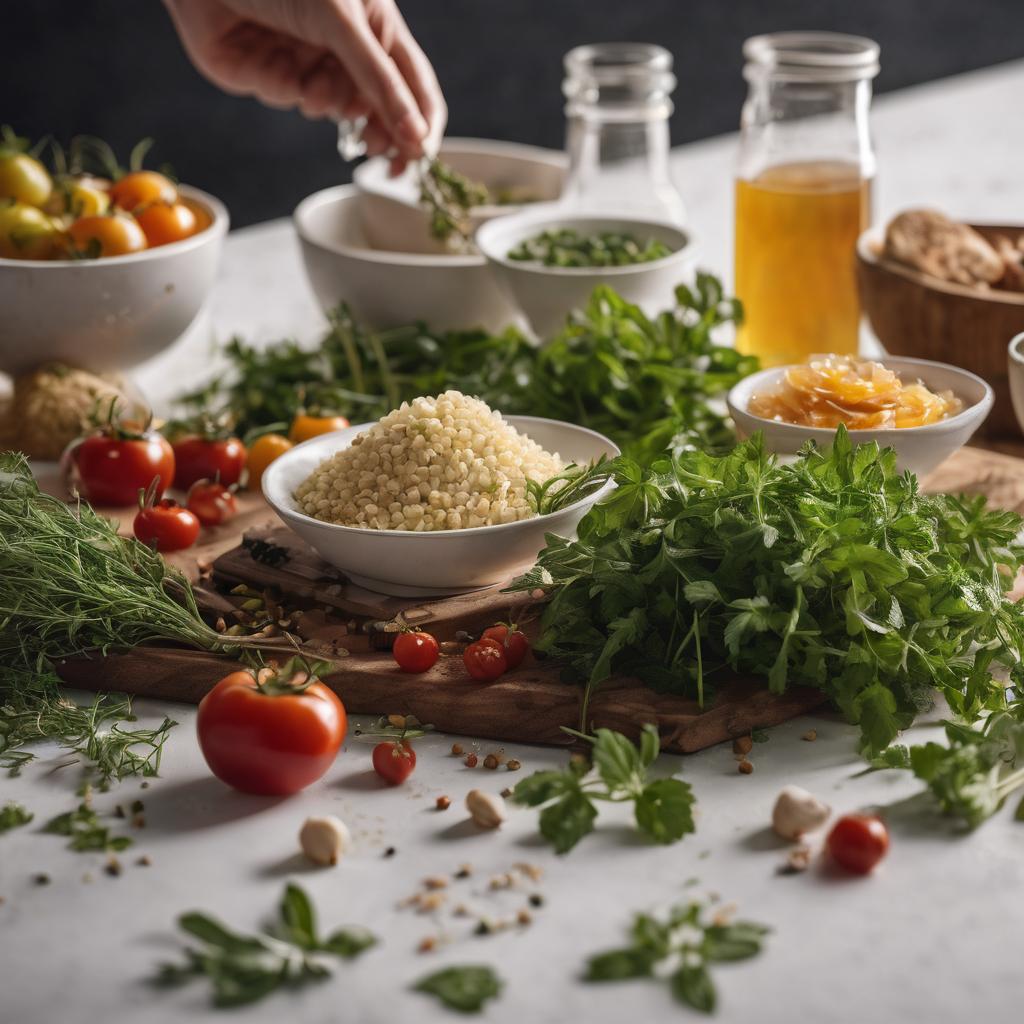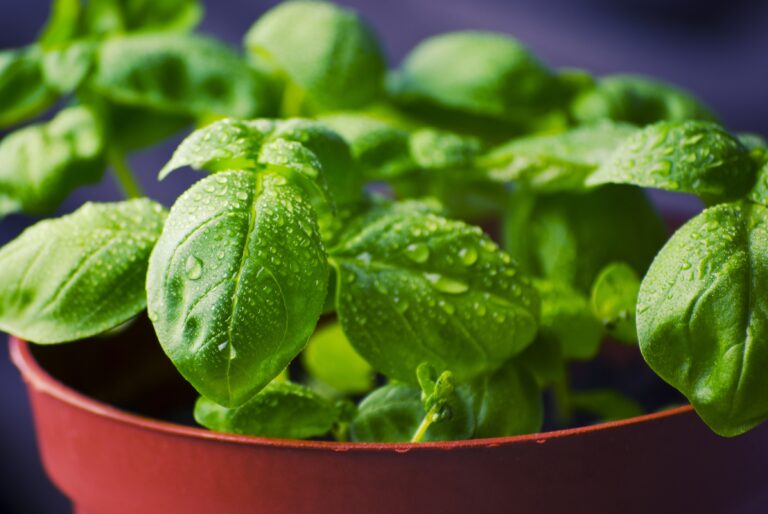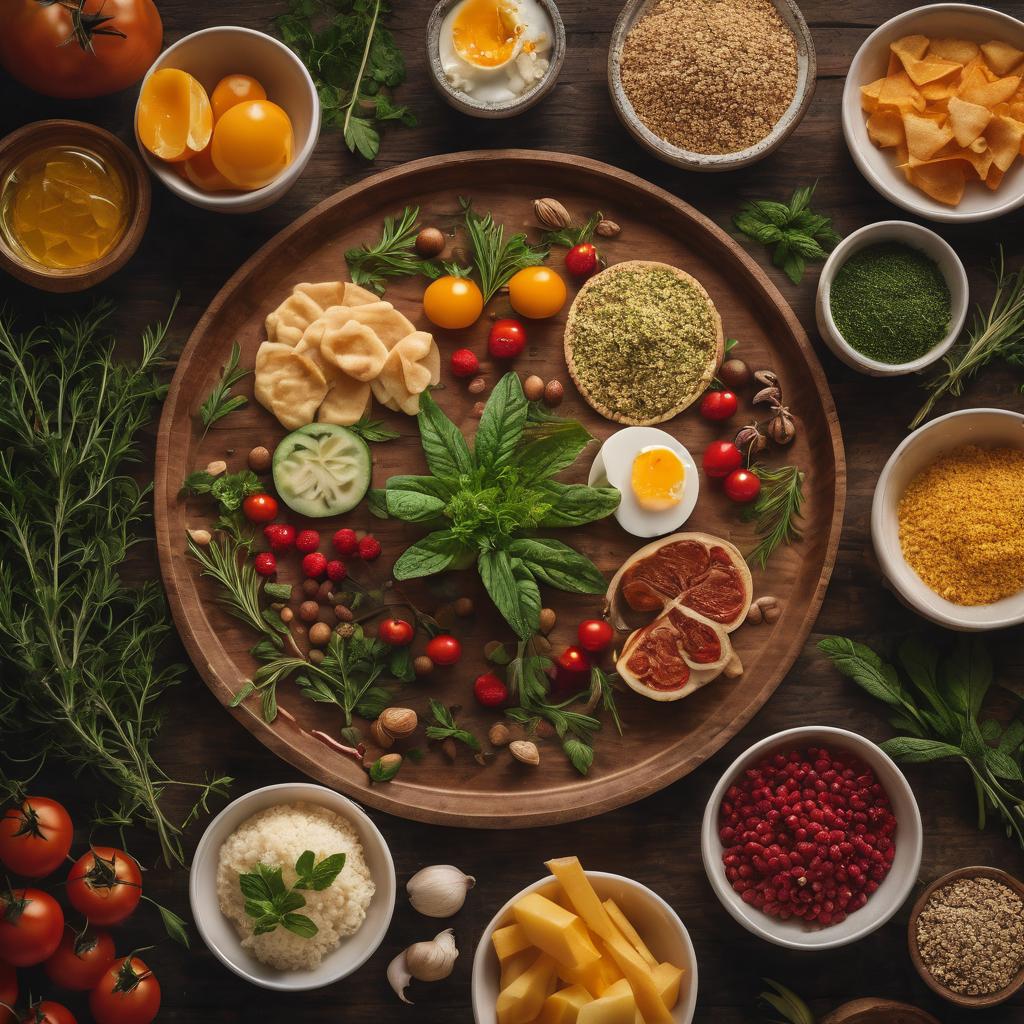Understanding the Influence of Herbs on Food Flavor
Herbs are a fundamental component of culinary traditions across the globe, playing a crucial role in enhancing the flavors of various dishes. From delicate, aromatic leaves to pungent, earthy roots, herbs bring a diverse range of flavors and aromas to the table. Understanding the influence of herbs on the flavor of food is vital for both professional chefs and home cooks alike.
The flavors imparted by herbs can be subtle or bold, adding depth and complexity to dishes. Whether used fresh or dried, herbs contribute unique characteristics that can elevate a dish from ordinary to extraordinary. Mint’s refreshing and cooling properties, for example, can lighten up a salad or a fruity dessert, while the earthiness of rosemary can enhance the richness of roasted meats. By exploring the vast array of herbs available and experimenting with different combinations, one can unlock a world of possibilities in the kitchen.
• Herbs are a fundamental component of culinary traditions across the globe
• They enhance the flavors of various dishes
• Herbs bring a diverse range of flavors and aromas to the table
• Understanding their influence on food flavor is vital for chefs and home cooks alike
• The flavors imparted by herbs can be subtle or bold, adding depth and complexity to dishes
• Whether fresh or dried, herbs contribute unique characteristics to elevate a dish
• Mint’s refreshing and cooling properties can lighten up salads or fruity desserts
• Rosemary’s earthiness enhances the richness of roasted meats
• Exploring different combinations of herbs unlocks endless possibilities in the kitchen
Enhancing Savory Dishes with the Right Herb Combinations
When it comes to enhancing the flavors of savory dishes, the right herb combinations can make all the difference. Herbs not only add a burst of freshness and aroma, but they also contribute depth and complexity to a wide range of savory recipes. From classic herb combinations like rosemary and thyme to unique pairings like dill and tarragon, the options are endless.
One popular herb combination for savory dishes is the classic duo of basil and oregano. These two herbs, with their distinctive flavors, complement each other perfectly in Italian dishes like pasta sauces, pizzas, and roasted vegetables. The earthiness of oregano balances the sweetness of basil, creating a harmonious blend of flavors. Whether used fresh or dried, basil and oregano add a vibrant kick to any savory recipe.
Another herb combination that shines in savory dishes is the pairing of sage and parsley. Sage, with its strong and aromatic flavor, adds a touch of bitterness to dishes, while parsley brings a fresh and vibrant note. This combination works wonders in meat-based recipes like roasted chicken, turkey, or pork. The robustness of sage and the lightness of parsley create a well-rounded flavor profile that elevates the taste of the dish.
Incorporating the right herb combinations into your savory dishes allows you to unleash a delightful array of flavors and elevate your culinary creations to new heights. Experimenting with different herbs and finding the perfect combinations for your favorite recipes can open up a world of exciting possibilities in the kitchen. So next time you’re cooking a savory dish, don’t forget to harness the power of herbs and let their aromatic charm take center stage.
• Basil and oregano: These herbs complement each other perfectly in Italian dishes like pasta sauces, pizzas, and roasted vegetables. They add a vibrant kick to any savory recipe.
• Sage and parsley: This combination works wonders in meat-based recipes like roasted chicken, turkey, or pork. The robustness of sage and the lightness of parsley create a well-rounded flavor profile.
• Experimenting with different herb combinations can open up a world of exciting possibilities in the kitchen.
• Herbs add freshness, aroma, depth, and complexity to savory dishes.
• Incorporating the right herb combinations allows you to unleash a delightful array of flavors and elevate your culinary creations to new heights.
Elevating Sweet Dishes with Herb Infusions
Elevating the flavor profile of sweet dishes can be a delightful challenge, and one way to achieve this is through herb infusions. Herbs, with their unique aromas and tastes, have the power to add a surprising twist to our favorite desserts. Mint, for example, brings a refreshing and cool element to chocolates and fruits, making them even more delectable. Whether it’s a sprinkle of lavender on a lemon tart or a hint of rosemary in a peach cobbler, herbs can transform ordinary sweet treats into extraordinary culinary experiences.
Herb infusions can be achieved by steeping fresh or dried herbs in hot liquids like cream, butter, or syrups. This imparts the essence of the herb into the liquid, which is then incorporated into the dessert recipe. For instance, a simple vanilla sponge cake can be taken to new heights by infusing the sugar with fragrant basil leaves. The resulting basil-infused sugar not only adds a touch of herbaceousness but also perfumes the entire cake with its unique aroma. Experimentation with different herb combinations allows for endless possibilities of elevating sweet dishes and surprising the palate.
• Mint adds a refreshing and cool element to chocolates and fruits, enhancing their flavors.
• Lavender sprinkled on a lemon tart creates a unique and aromatic twist.
• Rosemary infused in a peach cobbler brings out the natural sweetness of the fruit.
• Steeping fresh or dried herbs in hot liquids like cream, butter, or syrups imparts their essence into the liquid.
• Basil-infused sugar can elevate a simple vanilla sponge cake with its herbaceous flavor and aroma.
• Experimenting with different herb combinations opens up endless possibilities for creating extraordinary sweet dishes.
Exploring Herb Pairings for Different Types of Meat
When it comes to cooking different types of meat, herbs play an essential role in enhancing the flavors and creating a delicious dish. Each type of meat has its own unique characteristics that can be complemented by specific herbs. For instance, when cooking beef, robust herbs like rosemary and thyme can add depth to the meat’s rich flavor. These herbs can be used in marinades, rubs, or even as a garnish to bring out the best in a perfectly cooked steak or roast.
Poultry, on the other hand, pairs exceptionally well with lighter herbs such as parsley, sage, and tarragon. These herbs offer a fresh and aromatic touch to chicken or turkey dishes. Whether it’s a delicate herb butter for basting or a sprinkle of fresh herbs as a finishing touch, they can elevate the taste of your poultry to a whole new level. Herb-infused oils or herb rubs are also great options for imparting a burst of flavor to your grilled or roasted chicken.
• Beef:
– Rosemary
– Thyme
• Poultry:
– Parsley
– Sage
– Tarragon
Unleashing the Potential of Herbs in Vegetarian and Vegan Cooking
When it comes to vegetarian and vegan cooking, herbs can play a crucial role in enhancing flavors and creating unique taste profiles. By incorporating herbs into plant-based dishes, you can unleash their full potential and elevate your culinary creations. Whether you’re cooking a hearty vegetable stew or a refreshing salad, the right combination of herbs can bring out the natural flavors of your ingredients and add depth to your dishes. From classic choices like basil and parsley to more exotic options like coriander and thyme, herbs can take your vegetarian and vegan dishes to a whole new level.
One of the key advantages of using herbs in vegetarian and vegan cooking is their ability to bring variety and complexity to otherwise simple recipes. With a wide range of flavors and aromas to choose from, you can experiment with different herb combinations to create unique and exciting taste experiences. For example, a blend of rosemary and garlic can add a savory touch to roasted vegetables, while a sprinkle of dill can bring a refreshing burst of flavor to a creamy plant-based dip. By understanding the individual characteristics of different herbs, you can mix and match them to create harmonious flavors that complement and enhance the natural goodness of plant-based ingredients.
• Herbs can enhance flavors and create unique taste profiles in vegetarian and vegan cooking.
• Incorporating herbs into plant-based dishes can unleash their full potential.
• The right combination of herbs can bring out the natural flavors of ingredients and add depth to dishes.
• Classic choices like basil and parsley, as well as more exotic options like coriander and thyme, can take vegetarian and vegan dishes to a new level.
• Using herbs in vegetarian and vegan cooking brings variety and complexity to simple recipes.
• Experimenting with different herb combinations allows for unique taste experiences.
• Rosemary and garlic blend adds a savory touch to roasted vegetables.
• Dill sprinkled on a creamy plant-based dip brings a refreshing burst of flavor.
• Understanding the individual characteristics of different herbs helps in mixing them harmoniously.
Discovering Herb Combinations for Seafood Delicacies
When it comes to cooking seafood delicacies, the right combination of herbs can take your dish from ordinary to extraordinary. Whether you are preparing grilled fish, shrimp scampi, or seafood pasta, incorporating the right herbs can enhance the flavors and elevate the overall dining experience.
One classic herb combination for seafood is dill and lemon. The fresh and citrusy aroma of lemon pairs perfectly with the earthy and slightly tangy taste of dill, creating a delightful balance of flavors. This combination works especially well with grilled or baked fish, as it brightens and enhances the natural flavors of the seafood. Additionally, the vibrant green color of dill adds a visual appeal to the dish, making it even more appetizing. So, next time you are cooking seafood, don’t forget to reach for dill and lemon to create a truly mouthwatering meal.
• Dill and lemon are a classic herb combination for seafood delicacies.
• The fresh and citrusy aroma of lemon pairs perfectly with the earthy and tangy taste of dill.
• This combination enhances the natural flavors of grilled or baked fish.
• The vibrant green color of dill adds visual appeal to the dish.
Creating Harmonious Herb Blends for Soups and Stews
Creating harmonious herb blends for soups and stews requires a careful selection of complementary flavors and aromas. The right combination of herbs can enhance the overall taste profile and bring a depth of flavor to these comforting dishes. When it comes to soups, hearty options like thyme, rosemary, and bay leaves are commonly used to add a savory and earthy note. These herbs work especially well with rich meat or vegetable stocks, infusing the soup with their distinctive flavors. For stews, on the other hand, herbs like oregano, sage, and parsley can lend a brighter and fresher taste, balancing out the richness of the meat or vegetables. Experimenting with different herb blends can open up a world of possibilities, allowing you to create unique and delicious soups and stews to satisfy your palate.
• Thyme, rosemary, and bay leaves are commonly used in soups to add a savory and earthy note.
• These herbs work well with rich meat or vegetable stocks, enhancing the overall taste profile.
• Oregano, sage, and parsley can lend a brighter and fresher taste to stews.
• These herbs balance out the richness of the meat or vegetables in stews.
• Experimenting with different herb blends can lead to unique and delicious soups and stews.
Herb-Infused Oils and Butters: A Chef’s Secret Weapon
Herb-infused oils and butters are like secret weapons in a chef’s arsenal, adding depth and complexity to dishes with just a few drops or a smear. These infused creations not only enhance the flavor of the dish but also impart the aromatic qualities of the herbs used. From drizzling over roasted vegetables to sautéing meats and tossing with pasta, herb-infused oils and butters elevate the taste profile of any dish.
The process of creating herb-infused oils and butters is relatively simple. Fresh or dried herbs are steeped in oil or melted butter, allowing the flavors to infuse over time. Popular herbs used for infusions include rosemary, thyme, basil, and garlic. The oil or butter can be used immediately after infusion or stored for future use. The possibilities are endless, as chefs can experiment with different herb combinations to create unique and flavorful oils and butters that perfectly complement their culinary creations.
• Herb-infused oils and butters are secret weapons in a chef’s arsenal
• They add depth and complexity to dishes with just a few drops or a smear
• These creations enhance the flavor of the dish and impart aromatic qualities
• They can be used for drizzling over roasted vegetables, sautéing meats, or tossing with pasta
• The process is simple: steep fresh or dried herbs in oil or melted butter
• Popular herbs for infusions include rosemary, thyme, basil, and garlic
• Infused oil/butter can be used immediately or stored for future use
• Chefs can experiment with different herb combinations to create unique flavors.
The Art of Balancing Herbs in Salads and Dressings
When it comes to creating a refreshing and flavorful salad or dressing, the art of balancing herbs cannot be overlooked. Herbs have the power to elevate the taste of your greens and add a burst of aromatic goodness to your dressings. However, achieving the perfect balance requires a thoughtful selection and combination of herbs.
One key aspect to keep in mind is the intensity of different herbs. Some herbs, such as basil and dill, have a strong flavor that can quickly overpower the dish if used in excess. On the other hand, milder herbs like parsley and chives can add a subtle touch without overpowering the other ingredients. By using a combination of both strong and mild herbs, you can create a well-rounded and harmonious flavor profile that enhances the overall taste of your salad or dressing. Experimenting with different herb combinations is the secret to finding your own unique balance that tantalizes the taste buds.
• It is important to consider the intensity of different herbs when balancing flavors in salads and dressings.
• Strong-flavored herbs like basil and dill should be used sparingly to avoid overpowering the dish.
• Milder herbs such as parsley and chives can add a subtle touch without dominating other ingredients.
• Combining both strong and mild herbs creates a well-rounded flavor profile that enhances the overall taste.
• Experimenting with different herb combinations allows for personalization and finding your own unique balance.
Revolutionary Herb Pairings for Baking and Desserts
The world of baking and desserts is continuously evolving, with chefs and home cooks alike constantly seeking new and innovative ways to elevate their sweet creations. One such avenue of exploration is the use of herbs in baking, which can add a delightful twist to familiar flavors. The concept of combining herbs with sweet dishes may sound unconventional, but when done right, it can result in truly extraordinary flavor profiles.
One revolutionary herb pairing for baking and desserts is the combination of rosemary and lemon. While rosemary is typically associated with savory dishes, its earthy and aromatic qualities can beautifully complement the freshness of lemon in various desserts. The citrusy notes of lemon brighten up the rich and herby undertones of rosemary, creating a harmonious balance of flavors. Whether infused in a lemon rosemary pound cake or sprinkled on top of lemon bars, this unexpected herb pairing will leave your taste buds pleasantly surprised.
• The combination of rosemary and lemon adds a delightful twist to familiar flavors in baking and desserts.
• Rosemary’s earthy and aromatic qualities complement the freshness of lemon in various sweet dishes.
• The citrusy notes of lemon brighten up the rich and herby undertones of rosemary, creating a harmonious balance of flavors.
• Infusing rosemary into a lemon pound cake or sprinkling it on top of lemon bars can result in an extraordinary flavor profile.












